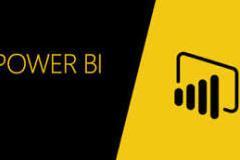Power BI is a cloud based data analysis, which can be used for reporting and data analysis from wide range of data source. Power BI is simple and user friendly enough that business analysts and power users can work with it and get benefits of it. On the other hand Power BI is powerful and mature enough that can be used in enterprise systems by BI developers for complex data mash-up and modelling scenarios.
Power BI Main Components
- Power Query: Data mash up and transformation tool.
- Power Pivot: In-memory tabular data modelling tool
- Power View: Data visualization tool/li>
- Power Map: 3D Geo-spatial data visualization tool
- Power Q&A: Natural language question and answering engine.
- Power BI Desktop: A powerful companion development tool for Power BI
Â
Overview
- Get Power BI Desktop
- Getting started with Power BI Desktop
Connect to Data
- Data Sources in Power BI Desktop
- Connect to web data
- Import Excel Workbooks
- Analysis Services Tabular Data
Shape and Combine Data
- Query overview
- Shape and combine data
- Data categorization
- Relationship view
- Create and manage relationships in Power BI Desktop
- Common query tasks
Data Fundamentals
- Data Type in Power BI Desktop
- Measures in Power BI Desktop
- Tutorial: Create your own measures
- Calculated columns
- Tutorial: Create calculated columns
- DAX
- Calculated tables
Working with Reports
- Report View
- Sort by column
- Tips and tricks for creating reports
- Import and display KPIs (Preview)
Creating Solutions
- Tutorial: Importing and analyzing data from a web page
- Tutorial: Analyzing sales data from Excel and an OData feed
- Tutorial: Facebook analytics
Sharing your Work
- Publish from Power BI Desktop
- Dashboards in Power BI
- Share a dashboard from Power BI






